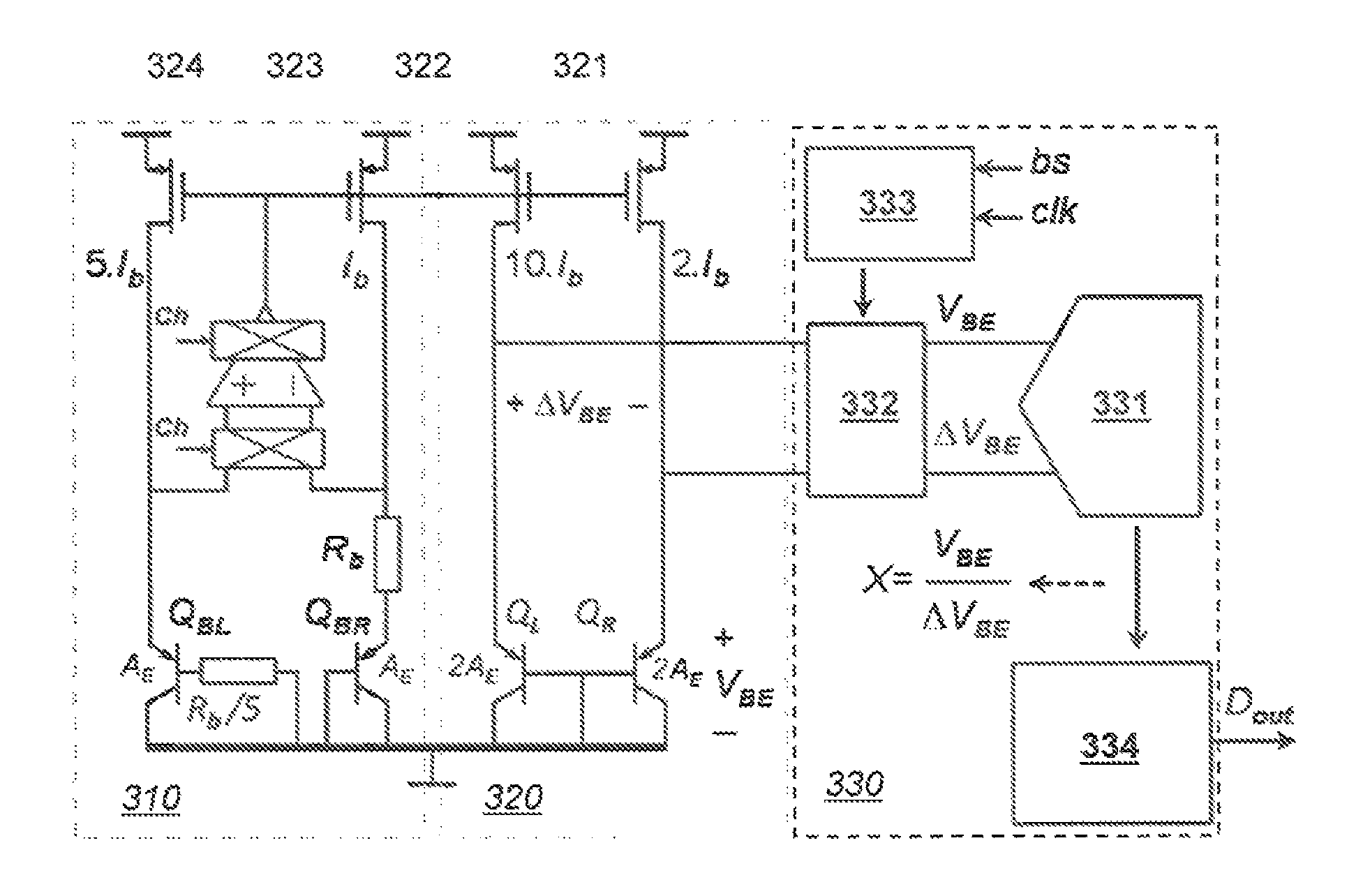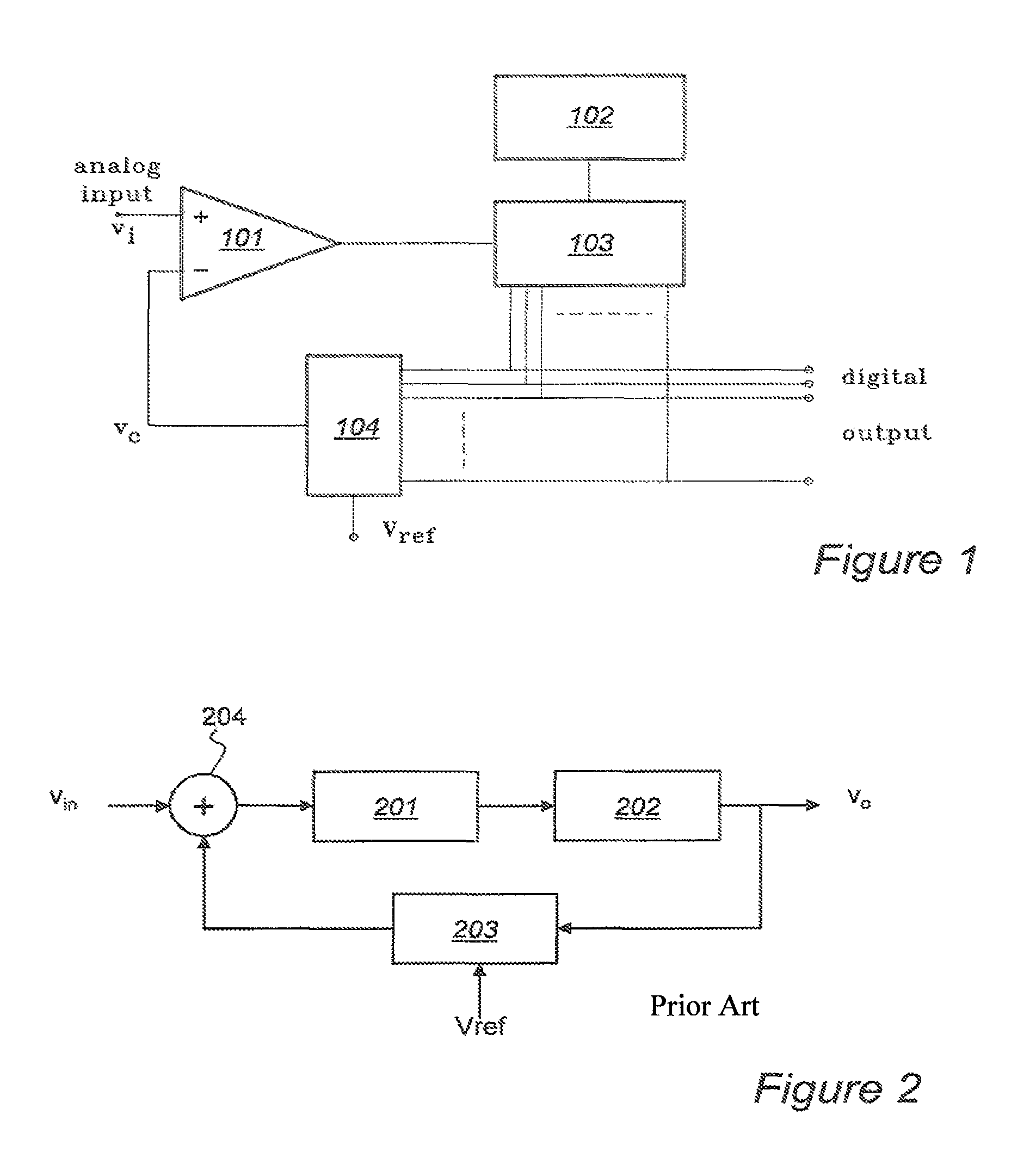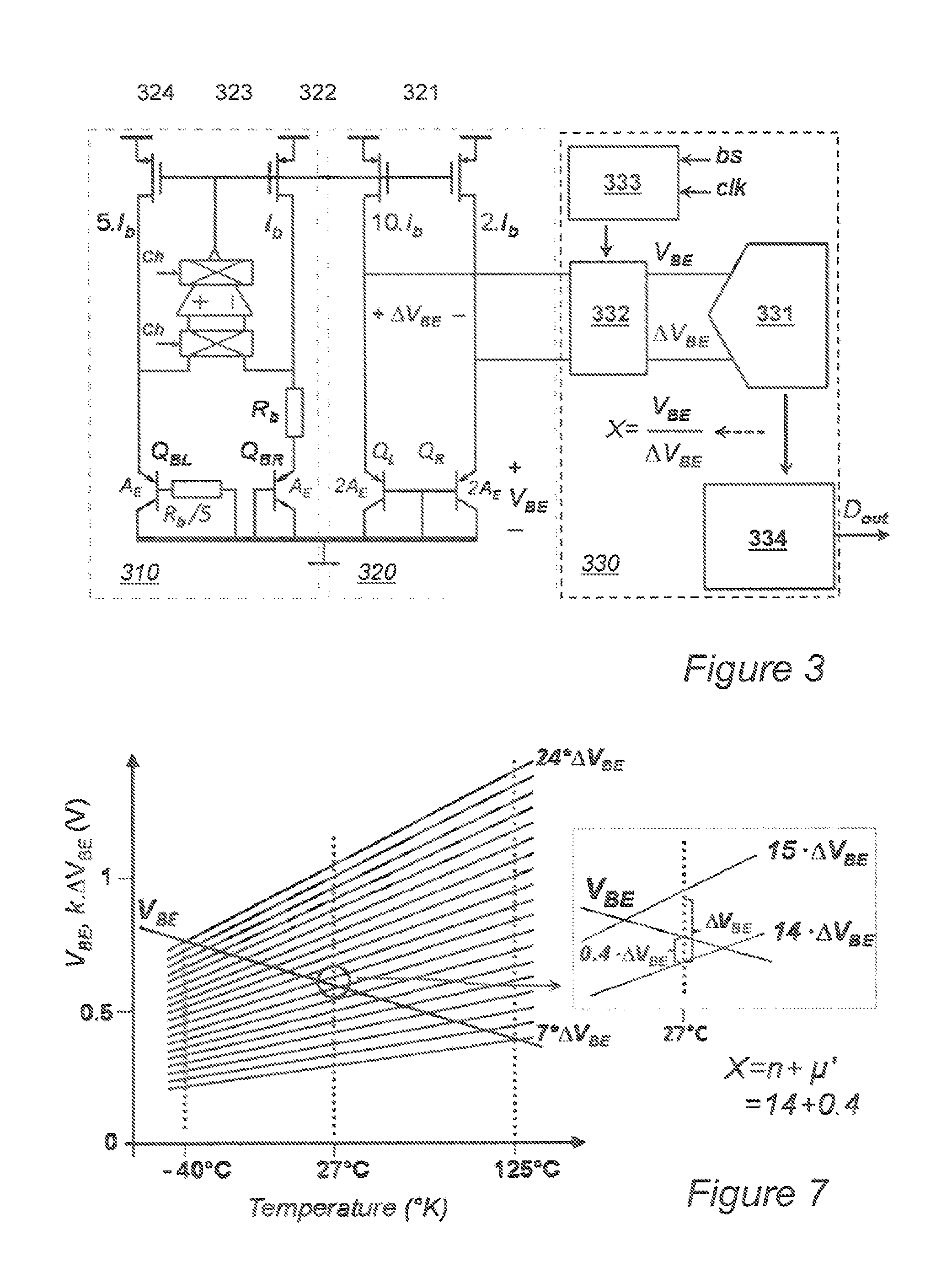ADC, a temperature sensor, a non-contact transponder, and a method of converting analog signals to digital signals
a temperature sensor and digital signal technology, applied in the field of analog-to-digital converters, can solve the problems of reducing stability, affecting the accuracy of data acquisition, so as to achieve the effect of not burdening the device with time and energy
- Summary
- Abstract
- Description
- Claims
- Application Information
AI Technical Summary
Benefits of technology
Problems solved by technology
Method used
Image
Examples
Embodiment Construction
[0035]A temperature sensor according to one aspect of the present invention is shown in schematic form in FIG. 3. It comprises three main parts: a bias circuit 310, a bipolar core 320 and a zoom ADC 330. The bias circuit comprises a pair of biasing transistors QBL and QBR having grounded collectors, the base of one of which (QBL) is connected to ground by a first biasing resistor (Rb / 5), the base of the other (QBR), being directly grounded. The emitters of the transistors are connected to a supply voltage respectively via MOSFETs 323 and 324, in the case of QBR by a second biasing resistor Rb. The emitters are linked by an operational amplifier which forces the voltages on the drains of MOSFETs 323 and 324 to be the same, which in turn forces the voltage across the resistor Rb to be a function of the difference in the base-emitter voltages of QBL and QBR. This action establishes a well-defined bias current of Ib through the resistor. The MOSFETs are sized such that the ratio of thei...
PUM
 Login to View More
Login to View More Abstract
Description
Claims
Application Information
 Login to View More
Login to View More - R&D
- Intellectual Property
- Life Sciences
- Materials
- Tech Scout
- Unparalleled Data Quality
- Higher Quality Content
- 60% Fewer Hallucinations
Browse by: Latest US Patents, China's latest patents, Technical Efficacy Thesaurus, Application Domain, Technology Topic, Popular Technical Reports.
© 2025 PatSnap. All rights reserved.Legal|Privacy policy|Modern Slavery Act Transparency Statement|Sitemap|About US| Contact US: help@patsnap.com



